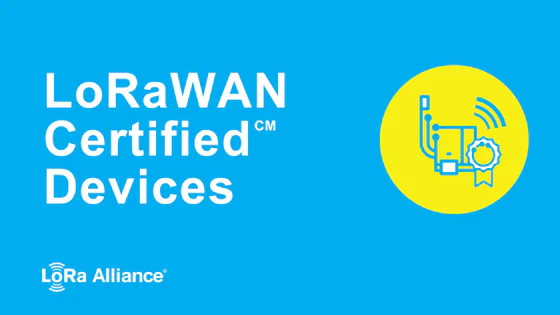

Certifying a LoRaWAN® device is a crucial step in bringing it to market. Whether you’re manufacturing end devices, developing gateways, or integrating IoT modules, device certification ensures compliance, interoperability, and legal authorization to operate in specific regions.
In this article, we explain what LoRaWAN device certification involves, who oversees it, why it’s essential, and how to prepare for the process successfully.
LoRaWAN device certification is the formal process of validating that a device:
Certification applies to both end devices (sensors, actuators, trackers) and gateways, although the procedures and requirements differ slightly between the two.
LoRaWAN certification typically involves three layers of compliance:
| Certification Type | Managed By | Purpose |
|---|---|---|
| Protocol Certification | LoRa Alliance® | Ensures compatibility with LoRaWAN specs |
| Radio Certification | Regional Bodies (FCC, CE…) | Validates RF behavior in licensed bands |
| Interoperability Testing | Authorized Labs | Confirms real-world performance on networks |
The LoRa Alliance Certification Program is the central authority for protocol-level certification. It works with authorized test labs like TÜV Rheinland, Dekra, AT4 Wireless, and others.

“LoRaWAN® certification is not just a technical formality; it’s a strategic milestone that ensures the reliability and interoperability of our IoT solutions across all markets. It helps us earn customer trust and accelerate large-scale deployments“
Device certification is not optional—it is often a regulatory requirement and a strong commercial differentiator.
Benefits
Note: Many public network operators only accept certified devices on their infrastructure.


1. Design for Certification
Build your device with certification in mind. Choose chipsets, radio modules, and firmware that are already known to pass compliance tests.
2. Select Target Region(s)
Determine where your device will be deployed (e.g., EU868, US915, AS923) and adapt your design accordingly.
3. Choose an Authorized Lab
Work with a lab accredited by the LoRa Alliance. They will guide you through the test plan based on your product and region.
4. Submit for Testing
The lab will evaluate:
5. Obtain Certificate
Upon passing, you’ll receive:
To be fully compliant, most products must obtain both certifications.
A pre-certification audit and firmware review can prevent costly failures.
Certification is not “one and done.” If you:
…you may be required to retest or re-certify. Always consult your original lab or the LoRa Alliance for clarification.
LoRaWAN device certification is essential to guarantee performance, compliance, and trust in the global IoT ecosystem. Whether you’re targeting Europe, North America, Asia or beyond, following the correct certification path will save time, reduce risk, and open new markets.

About Actility
Actility, one of the co-inventors of LoRaWAN® technology and a founding member of the LoRa Alliance, is the leader in industrial-grade low-power wide-area network (LPWAN) connectivity and IoT tracking solutions. Actility’s ThingPark™ platform, which supports multi-radio connectivity (LoRaWAN®, NB-IoT, LTE-M), powers the majority of public networks and numerous private and enterprise networks worldwide. Through its subsidiary Abeeway, Actility offers patented ultra-low power, multi-radio trackers and comprehensive indoor and outdoor geolocation services. Additionally, the ThingPark Market boast the largest catalog of LoRaWAN® devices, gateways, and solutions available.
Media contact : marketing@actility.com – https://www.actility.com/contact/
At Actility, we are passionate about unlocking the full potential of IoT for businesses and communities around the world. Join us as we continue to innovate, collaborate, and lead the way in connecting the digital and physical realms through cutting-edge IoT solutions.
© 2024 Actility’s All Rights Reserved